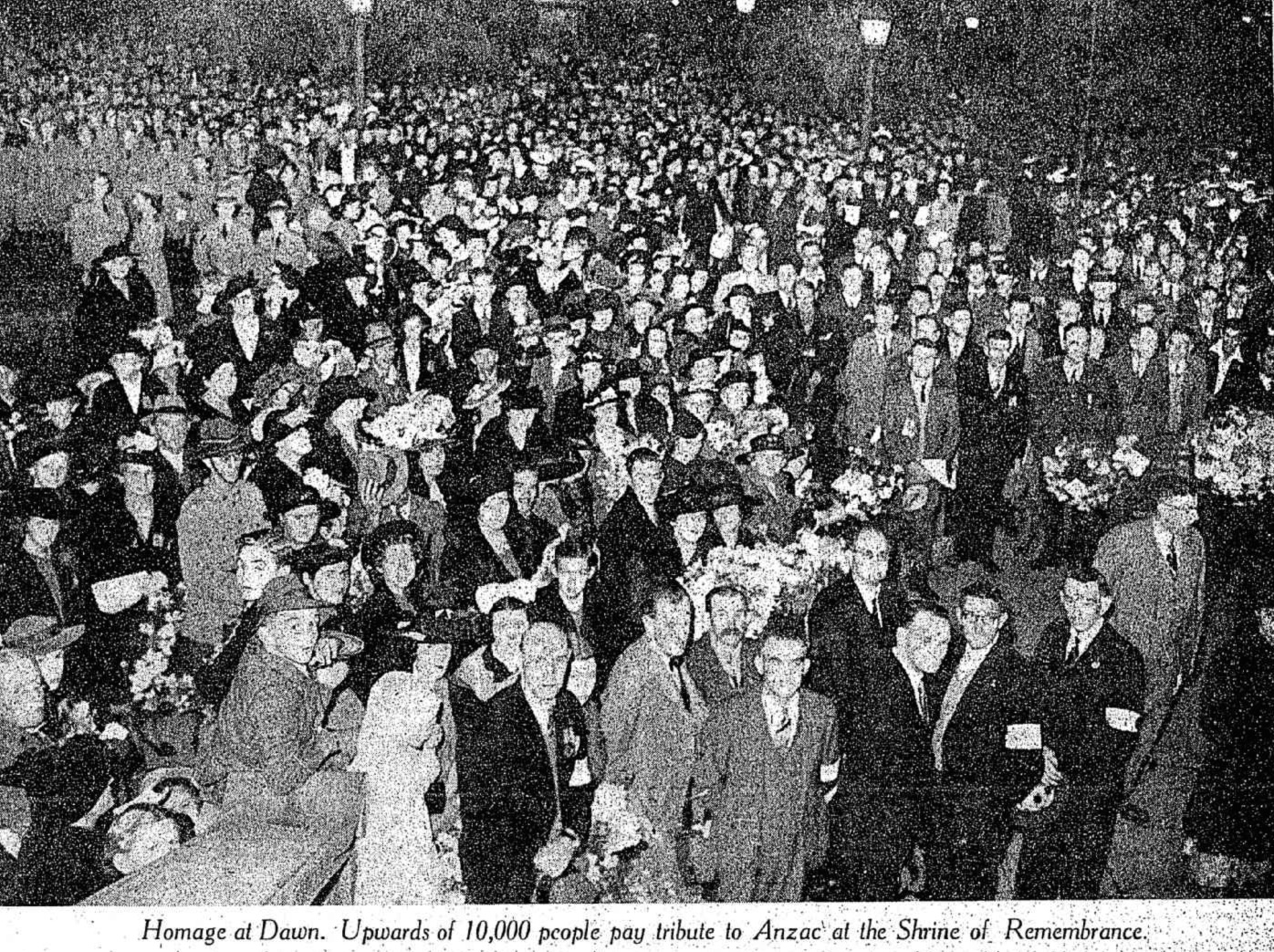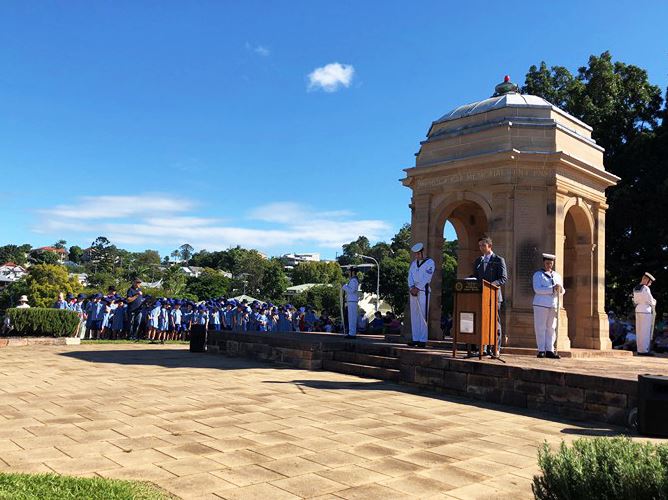ANZAC Day No.7
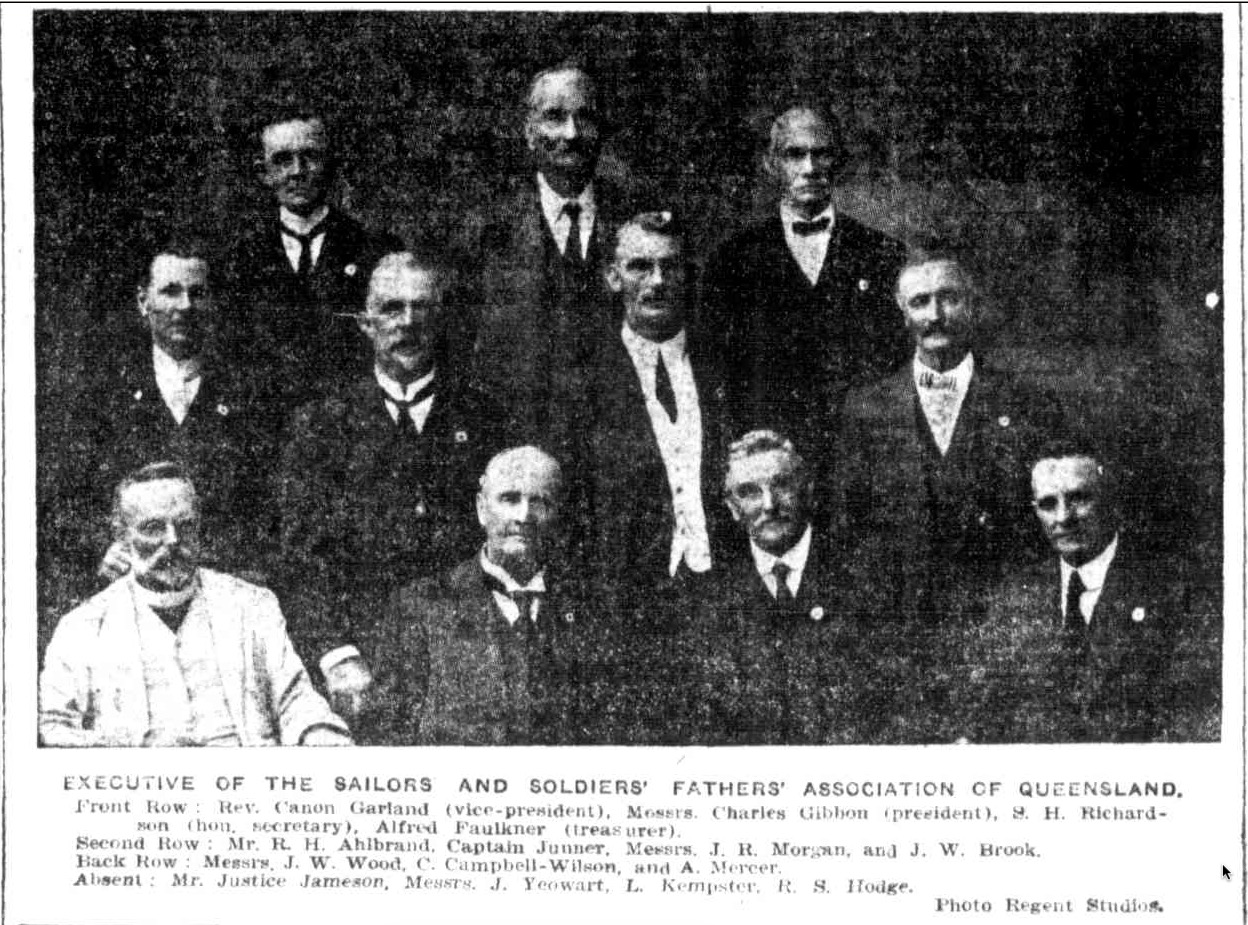
ABOVE: The executive members of The Sailors’ and Soldiers’ Fathers’ Association of Queensland – one of a string of First AIF-related organisations Canon Garland lent his considerable organisational heft to. This one was personal for Fr Garland: his son David James Garland was a soldier in World War I and would enlist again when World War II broke out. This image appeared in Brisbane’s “The Telegraph” on 11 April 1922 (page 10). Those pictured were: (front row) The Reverend Canon David John Garland (vice-president), Charles Gibbon (president), Samuel (“Dad”) Henry Richardson (honorary secretary) and Alfred Faulkner (treasurer); (second row) Henry Rudolph Ahlbrand, Captain Alexander Junner, James Richard Hope Morgan and John William Brook; (back row) John William Wood, C. Campbell-Wilson and Andrew Mercer; (Absent) Mr Justice Charles Jameson of the District Court of Queensland, John Yeowart, Leonard James Kempster and the former State Member for Nanango, Robert Samuel Hodge.
South Brisbane Meeting.
THE South Brisbane City Hall was crowded on Tuesday [ 25 April 1922 ] and an impressive and stirring meeting was held.
The Mayor of South Brisbane, (Ald. A. Faulkner) [ Alfred Faulkner ] presided.
On each side of the stage was hung a large wreath, and much bunting was draped about the walls.
The meeting opened with the singing of the hymn, “Nearer, My God, to Thee”, led by the South Brisbane City Choir.
The Chairman said that the large gathering present must satisfy everybody, that South Brisbane had not forgotten Anzac.
He predicted that 50 years hence, no hall in South Brisbane would be big enough to hold those who would attend an Anzac commemoration meeting. (Applause.)
The next Anzac commemoration would be tinged with regret that the Rev. J.S. Needham [ John Stafford Needham ] would not be present. (Applause.)
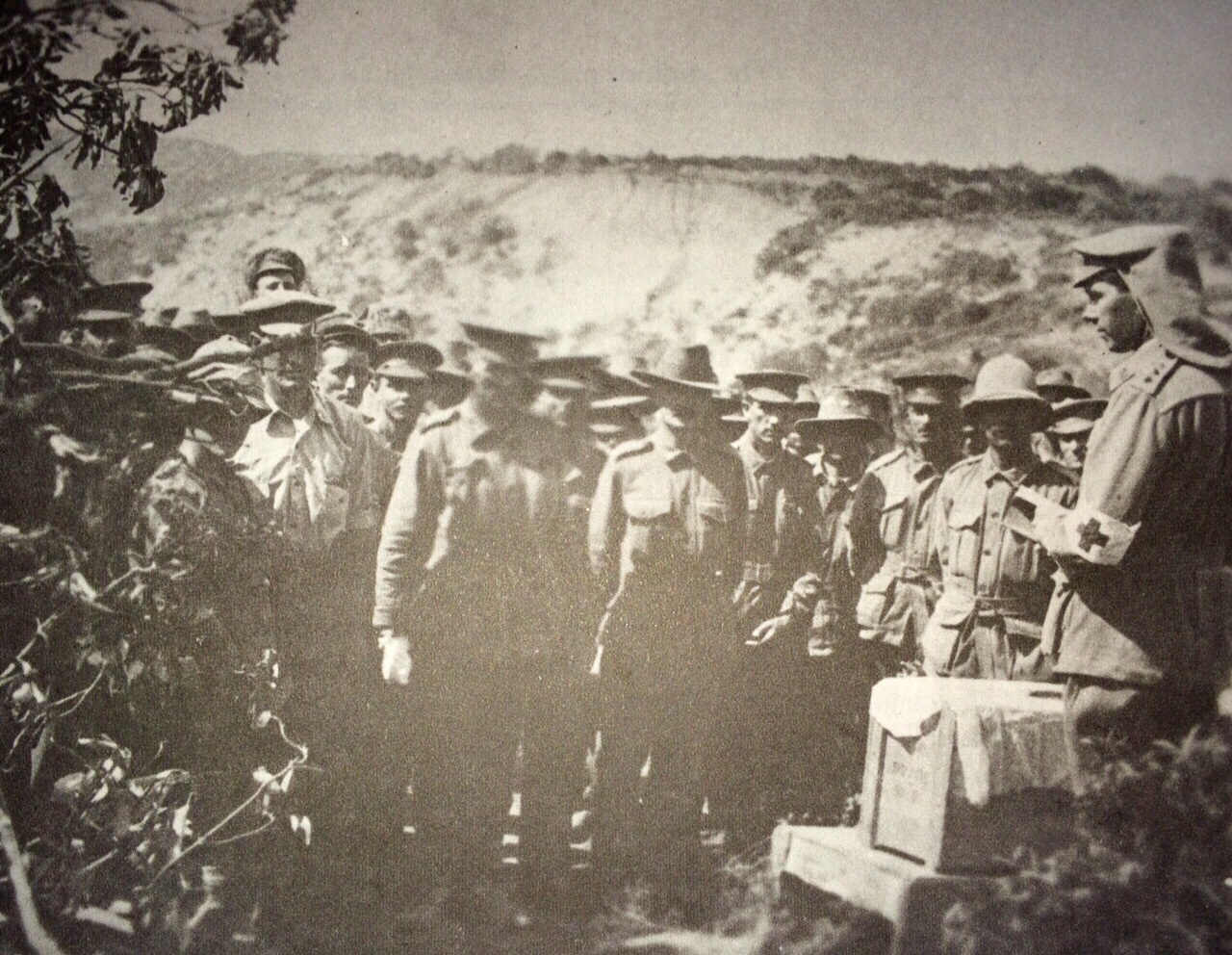
ABOVE: Chaplain Ernest Merrington’s makeshift chapel on Gallipoli.From the Australian War Memorial Collection.
Rev. Dr. E.N. Merrington [ Dr Ernest Northcroft Merrington ], who moved the formal resolution, congratulated the Mayor on the fine meeting.
It seemed to him, he said, that citizens of South Brisbane were awakening to a proper civic sense.
The greatest evidence of the existence of the Anzac spirit was in such commemoration meetings.
To Canon Garland much credit was due for working up the observation in Queensland, and keeping it sacred. (Applause.)
What Queensland did in that respect was an object lesson to the world.
This year church services were more largely attended than ever before, and the gathering at the Exhibition was most impressive.
As he heard “The Last Post” sounded at the Exhibition, it seemed to him that they were sending out their memorial call, and the hosts on the other side were answering it.
As he heard those wonderful strains it seemed as though the sound, was coming from further afield.
He caught the echo from Gallipoli cliffs, and other scenes of battle, and could see a phantom host standing to attention.
Dr. Merrington, in a eulogy of the Anzacs, said that the real characteristic of the Anzacs was self-forgetfulness.
It seemed most natural to the Anzac to go through what he did go through.
He believed that the Gallipoli campaign was successful in its moral and ultimately in its military affect.
The thrill of the Anzac landing went through the whole army.
What, continued the speaker, ought we to do in a practical way?
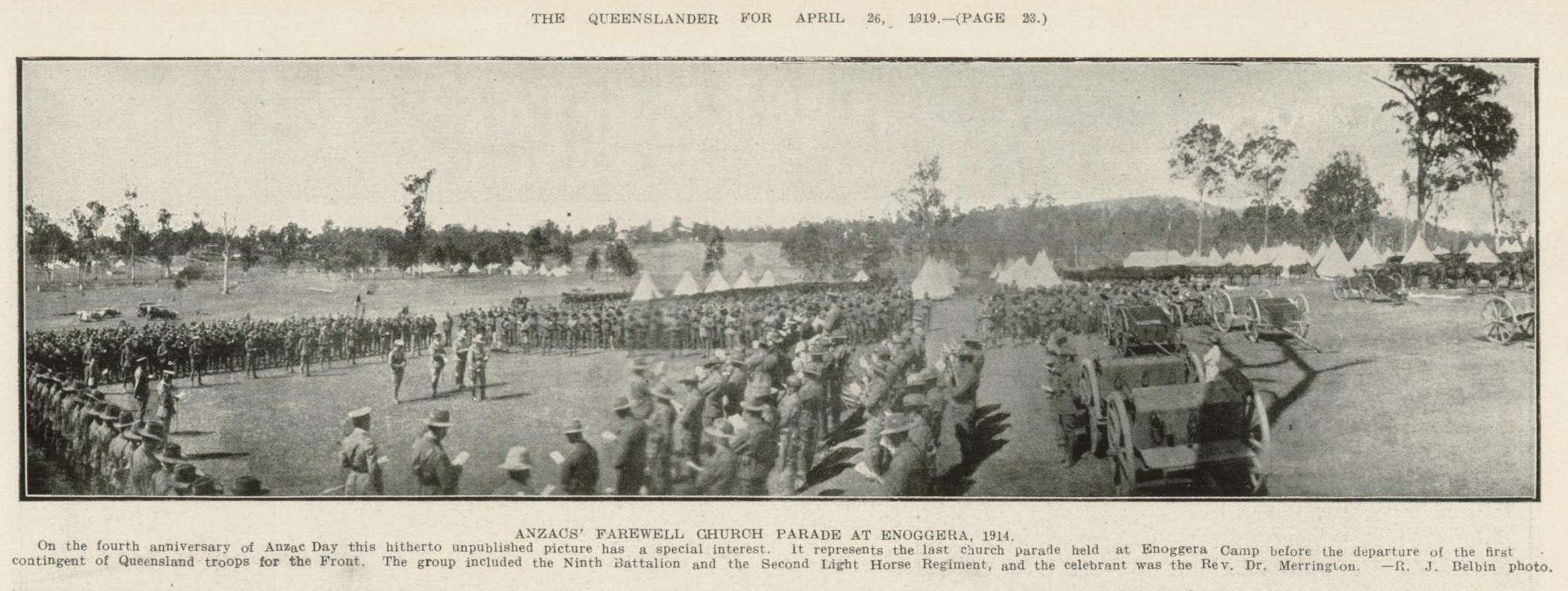
One thing was that a uniform for every returned soldier should he provided at least every seven years.
The Commonwealth professed to be grateful to those men who saved the country from the real menace of German domination, and at least should he prepared to do that much, such uniform to include the great slouch hat which put such terror into enemy hearts. (Applause.)
He urged his listeners to digest Captain Bean’s story of Anzac, and went on to say that opposite the Turkish monument at Russell’s Top there, ought to be erected another, giving the figure of the Anzac with his head bloody and unbowed there on the scene of his labours and the mausoleum of his body. (Applause.)
Touching on unemployment amongst “Diggers”, the speaker said that a Royal Commission should be appointed to find out the conditions and cause of the great social evil.
The object of the commission should be to ascertain why a “great rich productive country like Australia could not absorb the men who saved it from the heel of the Hun.” (Applause.)
When one reflected on the great things, the Anzacs did, one asked had Australia no better use for such magnificent qualities than to allow them to be engaged in a hand-to-hand effort to keeps the wolf from the door? (Applause.)
Mr. Andrew Mercer, in seconding the motion, said that there was little wonder that Dr. Merrington had asked for a Royal Commission to inquire into the cause of unemployment amongst “Diggers”.
He often wondered whether Australia was living up to the standard that the Diggers won for her.
Surely we could do something more for them than we were doing?
Some had come back to find their Calvary in Australia.
He thought that the meaning of Anzac should be instilled in the minds of the school children. (Applause.)
The saints’ days should be abolished, and Anzac Day made the one great national day for Australia. (Applause.)
The one minute’s silence was observed, alter which the West End Salvation Army Band played the “Dead March” [ from Saul ], and “The Last Post” was sounded.
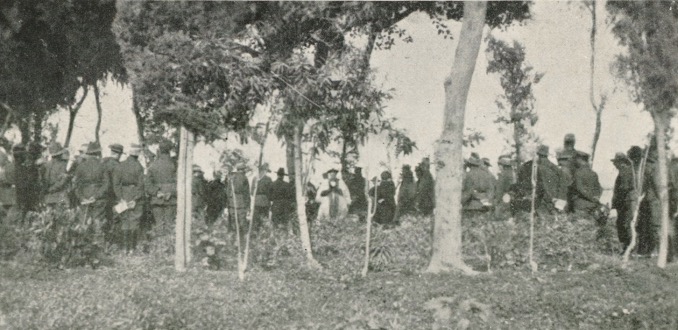
ABOVE: A Soldier’s funeral, Cairo, 1918. The Padre in the centre of the image is thought to be Chaplain LTCOL, the Reverend Canon David John Garland.
Canon Garland [ David John Garland ] supported the resolution.
In an eloquent address, he emphasised the vital power of loyalty and spoke of the great sacrifices made by the soldiers. (Applause.)
Rev. Needham, in moving the second resolution, said that the fact that he would be missing from the next Anzac commemoration did not matter. What did matter was the 70,000 dead. (Applause.)
He dealt with the part women played in the war, and said that his heartfelt sympathy went out to the mothers. (Applause.)
But his intensest sympathy went out to the mother of the man who did not go. (Applause.)
He too, urged his hearers to be staunch in dealing with disloyalty.
The Mayor, at this stage, movingly appealed for support for the fund for “Distressed Diggers”.
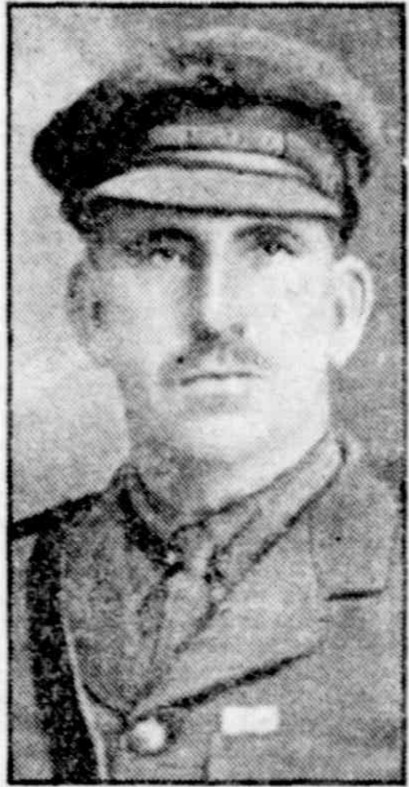
ABOVE: First AIF Chaplain LTCOL William (“Fighting Mac”) McKenzie of the Salvation Army.
Colonel Mackenzie [ William (“Fighting Mac”) Mackenzie ], who was greeted with ringing applause, seconded the second resolution.
He drew a vivid picture of the suffering of the soldiers.
The motions were carried with much enthusiasm.
During the meeting the South Brisbane City Choir sang “Australia’s Hymn for Her Dead”, “Now Pray We For Our Country” (Flower), and “The Radiant Morn” (Woodward).
Mr. R. Dally-Scarlet was the conductor, and Mrs. J. Cosgrove accompanist. The singing of the National Anthem concluded the meeting.
– from pages 22 and 23 of “The Week” (Brisbane) of 28 April 1922.

